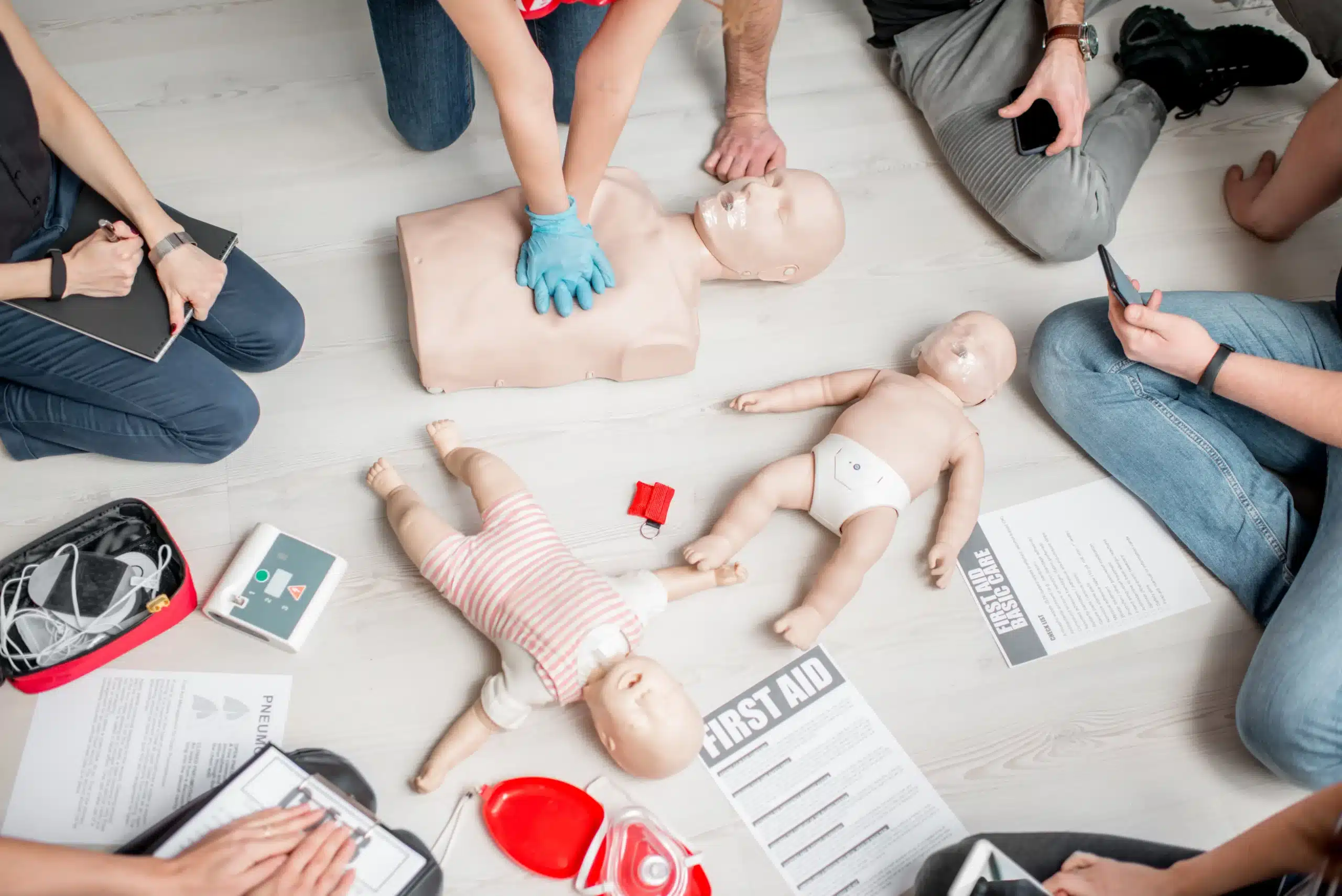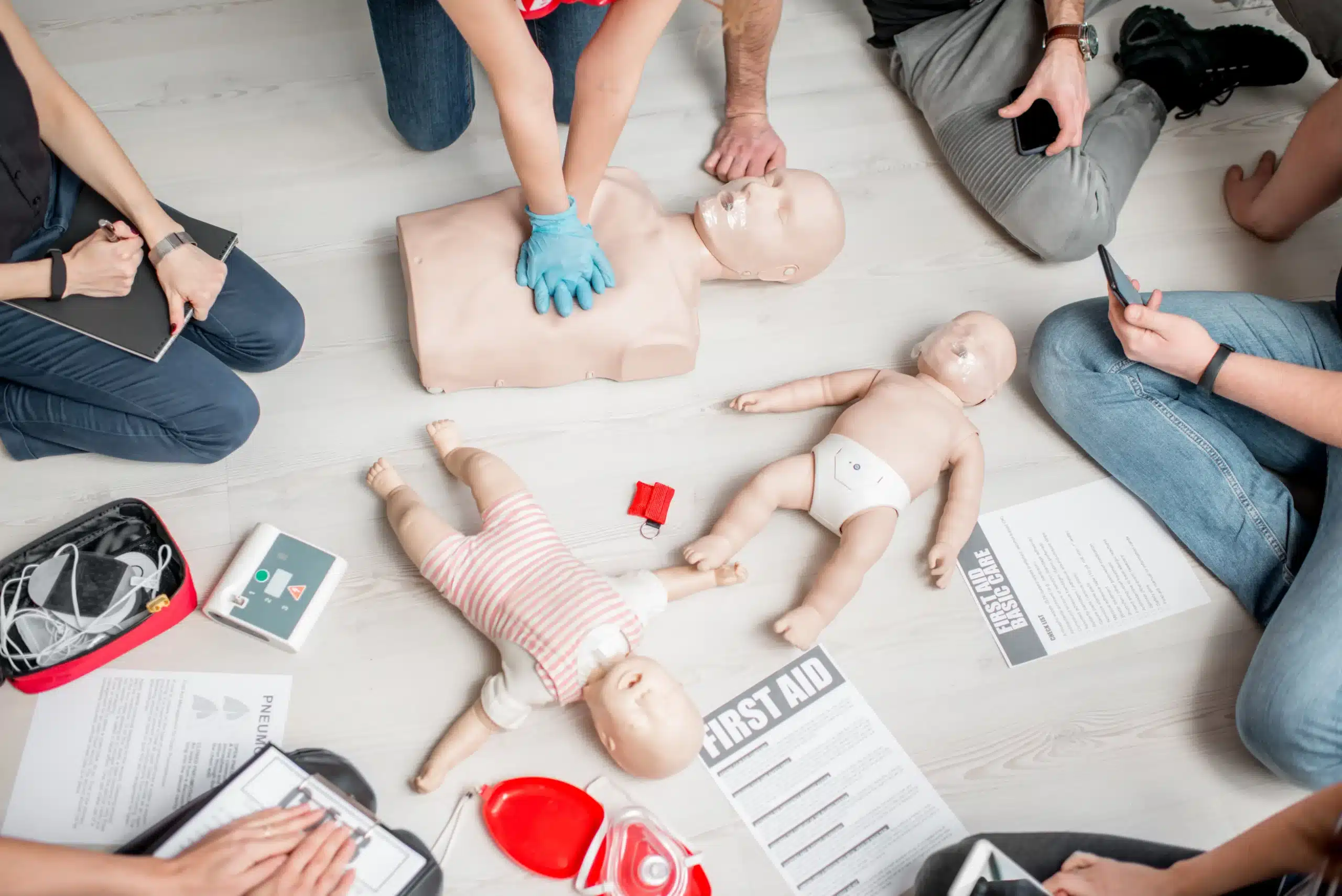Workplace safety is crucial now more than ever. Employers must prioritize the well-being of their staff, and one of the best ways to do this is through CPR and first-aid training. In this blog post, we’ll discuss the importance of this training and how it can make a difference during emergencies. By the end, you’ll clearly understand why this training is essential.
Understanding CPR and First-Aid Basics
Cardiopulmonary resuscitation (CPR) is a life-saving technique used in emergencies when someone’s breathing or heartbeat has stopped. First aid, on the other hand, involves basic medical care provided right after an injury. Together, these skills can be the difference between life and death.
Knowing CPR means mastering chest compressions and rescue breaths, which help maintain blood and oxygen flow in the body. First aid includes various skills, such as treating burns, cuts, and fractures. Both are essential in emergency situations.
In workplaces, having staff trained in CPR and first aid is crucial. It ensures that help is available even before professional medical assistance arrives, significantly improving the victim’s chances of survival.
The Impact of Training on Employee Confidence
When employees receive CPR and first-aid training, they gain valuable confidence. This newfound confidence goes beyond just handling emergencies—it influences their overall behavior at work.
Trained employees feel empowered, knowing they can make a difference when it matters most. This empowerment often leads to a more proactive workforce, as confident employees tackle challenges with enthusiasm.
Moreover, this confidence can be contagious. When colleagues see their trained peers in action, they may be inspired to seek training themselves, fostering a culture of safety and readiness in the workplace.
Enhancing Workplace Morale Through Preparedness
A workplace that prioritizes safety significantly boosts employee morale. When employees see their well-being is a priority, they feel valued. Providing CPR and first-aid training shows that management cares for its staff.
When workers feel supported, they tend to be more loyal, which can lead to lower turnover rates. Happy employees are also more productive, contributing to improved company performance.
Moreover, a safety-focused workplace attracts potential hires. Job seekers often seek out companies that prioritize employee welfare.
Legal and Ethical Implications of Workplace Safety
Workplace safety involves important legal considerations. Employers have a duty of care, which means they are required to provide a safe working environment. If they fail to do so, they could face legal consequences.
One proactive step employers can take is to offer CPR and first-aid training. This not only meets many workplace health and safety regulations but also helps companies fulfill their legal obligations while promoting ethical standards.
Ensuring employee safety is a demonstration of corporate responsibility—it’s about doing the right thing. Companies that prioritize ethics often build stronger trust with their clients and communities.
Steps to Implementing a Training Program
Implementing a training program can be straightforward. Start by selecting the right course provider—look for accredited organizations.
Once you’ve chosen a provider, schedule regular training sessions and ensure all employees can attend. It’s also helpful to offer refresher courses periodically.
Make training a part of your company culture by encouraging participation through incentives and recognizing those who complete the training to reinforce its importance.
Overcoming Common Objections to Training
Some may argue that training takes too much time, but the time invested in learning these skills pays off. It prepares employees for unexpected situations.
Cost can also be a concern, but think about the savings from avoided medical expenses and legal fees. In the long run, training proves to be cost-effective.
Finally, some might question the effectiveness of training. However, even basic knowledge can be vital in emergencies. Every second counts, and taking immediate action is always better than waiting.
Encouraging Continuous Learning and Improvement
Once a training program is established, continuous improvement is essential. Encourage employees to stay informed about best practices and share new developments in first-aid techniques. Create opportunities for discussion, allowing employees to share their experiences and insights. This exchange of ideas fosters a learning environment.
Continuous learning boosts employees’ confidence in their abilities and ensures the workplace is always prepared for any situation.
Building a Culture of Safety and Preparedness
Safety should be a core part of the company culture. Regular drills and simulations can enhance formal training, keeping skills sharp and emphasizing their importance.
Encourage open communication about safety. It’s vital for employees to share their concerns and suggestions. Building a culture of safety is a collaborative effort.
When safety becomes second nature, the workplace environment improves. Employees feel secure and valued, which leads to greater overall satisfaction.
Leveraging Technology for Enhanced Training
Technology can significantly enhance training. Online modules provide flexibility, allowing employees to learn at their own pace and revisit material as needed.
Virtual reality (VR) is another valuable tool that offers immersive training experiences. It simulates real-world scenarios, allowing for hands-on practice without any risks.
By integrating technology, training becomes more engaging and caters to various learning styles, leading to better information retention.
The Role of Management in Promoting Safety
Leadership plays a crucial role in shaping workplace culture. When management prioritizes safety, employees are more likely to take it seriously. Leading by example and participating in training sessions is essential. Support from leadership encourages participation, highlighting that safety is a collective responsibility.
Managers should actively promote training and its benefits. Recognizing and rewarding safety efforts further underscores its importance. Celebrating milestones and achievements related to safety initiatives reinforces the message that safety matters.
Conclusion
CPR and first-aid training are essential for workplace safety. They empower employees, enhance morale, and ensure everyone is prepared for emergencies. By investing in this training, employers not only meet legal and ethical responsibilities but also promote a culture of safety. The benefits reach beyond the workplace, positively impacting lives.
To learn more about implementing CPR and first-aid training in your workplace, reach out to Safety Training Seminars. Our accredited courses equip employees with life-saving skills and promote a safer workplace for all. Let’s work together to create a culture of safety and preparedness.






